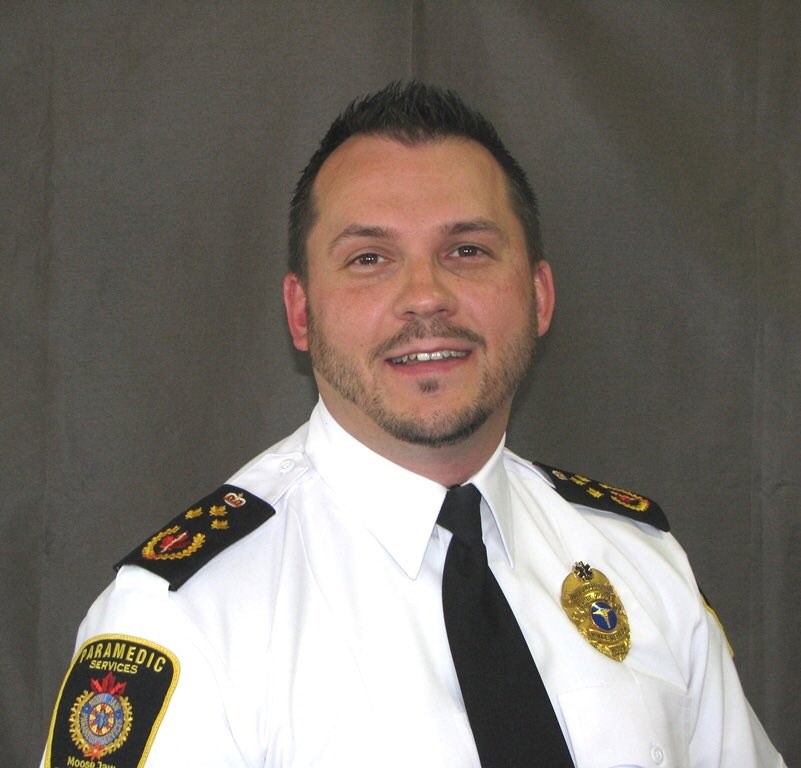The Saskatchewan College of Paramedics has named Kyle Sereda, the chief of Moose Jaw and District EMS, as its new president.
Sereda, 44, has sat on the college’s council for the past nine years, while the membership voted him in as vice-president in 2018. Sereda was excited to be named to the position but explained it wasn’t unexpected since the organization has a clear succession plan in place. Since he was vice-president for the past two years, he knew he would eventually ascend to the top position, but jokingly said he didn’t think it would happen during a pandemic.
The mandate of the college is to protect the public, and since Sereda is a front-line paramedic and head of Moose Jaw’s EMS organization, he doesn’t expect his roles to change.
Sereda has always wanted to support his profession and where it is going. He pointed out the paramedic profession is actually one of the younger emergency services in Saskatchewan, having been introduced about 60 years ago.
“(I’m) excited to move forward with the college at this time because there is some good things that are happening from a practitioner level,” he said.
This includes using personal protective equipment (PPE) more comprehensively during the coronavirus situation or giving paramedics more responsibilities, such as going into people’s homes to test for the virus.
“So we’re excited to see how our practice changes in relation to the pandemic, to practise safer and to bring more options to patients in their home,” added Sereda.
The role of the president is to work with the council to ensure the paramedic profession grows with the organization’s strategic plan. The role of a paramedic also continues to evolve, especially in light of its mandate to protect the public, keep people safe and use sound science, he explained.
“Since the college became a (licensed-body) college 11 years ago … that’s always been where we saw paramedics to make sure they were incorporated more into the health-care system,” said Sereda. “They’re health professionals; they’re regulated; they’re trained very well. So incorporating them into health-care teams or networks is where we see paramedics contributing to patients’ outcomes.”
Para-medicine is a new concept that has slowly gained traction in the last few years, he continued. The idea is to have a paramedic come to your home to offer services, especially if the rural areas don’t offer those services or if areas have more vulnerable populations. Significant improvements have been made in paramedic delivery, such as the creation of STARS Air Ambulance and fixed-wing paramedics.
Sereda became a paramedic in 1997 since his twin brother was an EMT at the time. Sereda saw how satisfied his brother was with the work and wanted to experience the same thing.
“I always wanted to work in a public service in relation to police, fire, or paramedics, and paramedics had a little more contact with patients,” he continued, “so I thought I’d try that first and (haven’t) looked back 23 years later.”
What Sereda enjoys most about his job, he explained, is the contact he has with patients, the support he can offer, the ability to treat life-threatening injuries, and the overall desire to help his fellow neighbours and friends.
He likes that every day is different, while he added with a laugh that being able to drive fast in an ambulance with lights flashing and sirens blaring is also a joy.




